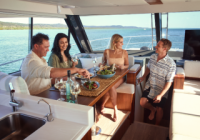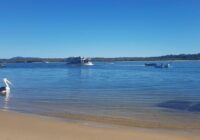Volunteer Marine Rescue – helping boaters on the water
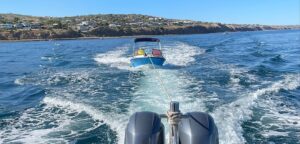
Volunteer Marine Rescue (VMR) are generally the first point of call if you find yourself in trouble when out on the water.
Over the summer period VMR were pleased to report a slight downturn in the number of boaties requesting assistance. Although some searches were conducted under the coordination of the SA Police, there were a number of call-outs related to mechanical breakdown, flat batteries or running out of fuel. This highlights the importance of preventative maintenance, servicing and pre-voyage planning.
While a mobile phone remains an available means of raising an alarm at sea or requesting assistance, boaters are reminded that network coverage can often be limited, especially at sea.
South Australia is fortunate to have reliable Very High Frequency (VHF) coastal radio coverage that can be used to raise an alarm or request assistance with a local VMR base or the Coast Radio Adelaide service, on VHF channels 16 or 67 using your VHF marine radio.
VHF is more reliable than 27MHz radios that some boaters have on board. Boaters are also encouraged to have their passage monitored by logging-on and off with their local VMR group. Tips on how to use your marine radio are available here from Marine Safety SA.
As we head into the winter season many boat owners will put their boats under wraps, which also provides the perfect opportunity to empty the contents and conduct an inspection of the boat’s hull and fittings, get your servicing and maintenance done and importantly, make sure that your safety equipment is all up to date and operating correctly in preparation for your next outing.
Trip preparation – Emergency marine communications
As the weather cools down it is vital that you have emergency communications on board, so you are prepared for changing weather conditions.
Marine Safety SA’s new emergency marine communications page tells you everything you need to know about flares, marine radio and emergency position indicator radio beacon (EPIRB). Make sure you check it out before heading out.
Weather can change quickly
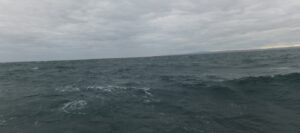
Always be aware of your vessel’s safe operating limits before heading out on the water. If the forecast winds are 15 knots or more or the seas are more than 1 metre it may be better to postpone your trip, particularly in a smaller vessel.
The weather page on the Marine Safety SA website has useful information about winds, squalls, thunderstorms, waves and tides.
BOM has a great video about undertaking the 5 vital weather checks before heading out:
- Are warnings current for your boating area?
- Are there weather conditions affecting safe navigation and comfort?
- What are the wind trends?
- What are the wave conditions?
- When is the next high and low tide?
Boating apps like Deckee have a range of information about weather from BOM and include tools to help you assess if it is a good idea to head out in the predicted weather.
Always exercise your own judgement when boating ‘If in doubt. Don’t go out.’
Safe operation – Be safe near big ships
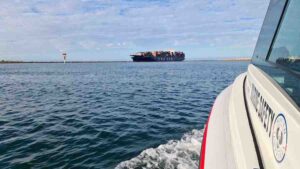
Do you have a smaller boat? Boaters are reminded to be responsible around big ships and to stay clear.
A big ship can take between one and two kilometres to stop and they can travel in excess of 20 knots. They must keep up speed in order to steer and they need to stay in the channel. Sometimes the channel extends bank-to-bank so expect large vessel traffic on all parts of the waterway, such as Outer Harbor and upper sections of the Port River.
Big ships also have ‘blind spots’ that can extend for many hundreds of metres, even up to one kilometre, in front of them. So, if you’re close to a big ship remember that they won’t be able to see you.
The powerful engines of big ships and tugs can also pull small vessels toward them when passing alongside or close to the middle of the ship. Water turbulence can be dangerous and large vessels cause:
Prop or wheel wash – a strong underwater current caused by tug or ship engines that can result in severe water turbulence hundreds of metres behind a large vessel.
- Bow waves – large surface waves caused by the bow of a ship pushing through the water. A bow wave can swamp small craft hundreds of metres away from the ship.
Stay clear of large ships and make sure you refresh your boating rules around them.
Know what to do if you paddle into trouble
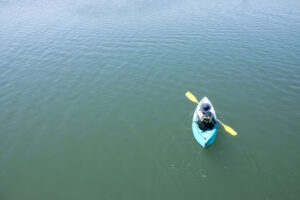
Are you heading out for a canoe or kayak in cooler weather? Make sure you follow these tips to stay safe on the water.
- Travel in a group where possible to maximise safety.
- Wear brightly coloured clothing to ensure you are visible to other water users and make sure your clothing is appropriate for the conditions and location where you are paddling.
- Make sure your skills and fitness level are adequate for the area and the conditions where you are paddling.
- Wear a correctly fitted lifejacket – remember lifejackets are compulsory to wear when operating kayaks and canoes on all waters. Check which lifejacket you need with Marine Safety SA’s online checking tool here.
- Always check the weather forecast before you head out.
Tips to help you survive if your craft is damaged or you capsize and can’t get back in:
- Make sure that everyone is wearing a lifejacket correctly before going over the side. Surviving in cold water is hard enough without having to stay afloat as well.
- Use a means of communication to send a distress call (mobile, EPIRB, PLB, flares). Only set off flares if they are likely to be seen.
- Don’t leave your unpowered craft if possible. Most unpowered craft are more easily seen by search vessels or aircraft than a person in the water. A partially submerged unpowered craft can also be used for support.
- You should generally ignore any impulse to swim ashore. Distances over water usually appear shorter than they actually are. It is almost always safer to stay with the unpowered craft unless you know that land is within comfortable swimming distance. Remember that the combination of your heavy clothing, cold water and the stress of the incident can reduce your normal swimming ability.
- Paddlers have greater exposure to the elements when boating in cooler weather and could develop hypothermia from wind-chill, capsizing or damp and wet clothes. Sudden immersion in cold water can be life-threatening, especially to people who are older, unfit or under stress from being in the water. Huddle together to reduce heat loss, and avoid excessive physical activity such as swimming, as this will increase body heat loss.
- Remember hypothermia is the effect of heat loss from the body and immersion in cold water causes the body to lose heat up to 25 times faster than normal.
For more information about operating paddle craft safely visit the Marine Safety SA website.
Marine upgrades – Kingscote jetty upgrades complete
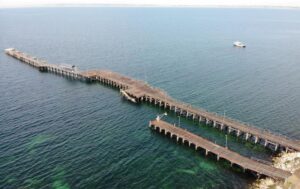
The Department for Infrastructure and Transport has completed upgrades and refurbishments to the Kingscote main jetty and nearby Fisherman’s Wharf and Screw Pile jetties at Kingscote.
The project work included:
- re-decking on the Kingscote main jetty
- repair and replacement of structural components including new piling and cross bracing on the main jetty, Fisherman’s Wharf and Screw Pile jetties
- removal of infrastructure that is no longer required, including the steel wharf and slipway north of the main jetty
- removal of the redundant ‘Ro-Ro’ ramp at the end of the main jetty.
These essential works will ensure the long-term structural integrity of the jetties and deliver a safe and reliable structures for the local community.
Dredging in the Port River complete
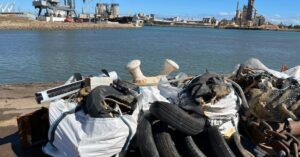
Flinders Port Holdings (FPH) has recently completed dredging and sweeping campaigns of Inner Harbour and Outer Harbor.
Maintenance dredging is required every 2 to 4 years to remove any sediment that has accumulated in the Port Adelaide River and ensure safe river depths and widths and the safe navigation of vessels.
Along with sediment, 2.3 tonnes of rubbish was removed from the Port River. The rubbish included rubber tyres, scrap metal, steel, rope and even a 500kg anchor.
If you are boating in the Port River please don’t dispose of rubbish in the water
Boating rules refresher – Special marks
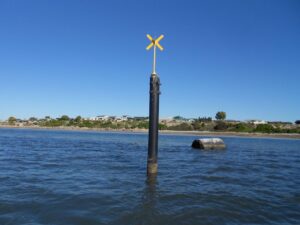
In South Australian waters special marks are commonly used to indicate no boating zones or speed restricted areas or a special feature on the water such as a shipwreck. The mark can be found by consulting a chart or sailing directions of the area.
Special marks are always yellow and the top mark, if fitted, is a single yellow X. If a light is fitted it will be yellow and may have any rhythm not used for white lights.
Find out about boating rules you need to know here.
Refresh you boating rules knowledge by taking the boating licence practice test here.
Inflatable lifejacket servicing tips
Inflatable lifejackets need to be serviced in line with manufacturer’s instructions, generally once a year. The video above gives you tips on how to service yours.
For more information visit the Marine Safety SA looking after your lifejacket page here.









